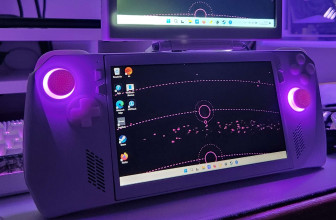
Best VR Headset
It’s fair to say that while we’re definitely already in the age of virtual reality, VR headsets haven’t reached the mainstream just yet.
On the one hand you have the likes of the HTC Vive and Oculus Rift, two headsets that sit at the very top end of the price spectrum and require a powerful (read: expensive) PC to boot.
Then at the other end of the spectrum you have the likes of Samsung’s Gear VR, which offers a much more limited virtual reality experience at a much more affordable price point.
We’ll have to wait until later this year for the arrival of the mid-range option, Sony’s PlayStation VR, but until then here’s our pick of the best VR headsets that are available to consumers right now, ranked in order from best to worst.
For our picks of the best headsets that aren’t yet available – or are currently available as developer kits – check out our guide to the best upcoming VR headsets.

1. HTC Vive
HTC Vive wins the first battle in the VR war
Availability: Out now | Price: $799 / £689 / AU$899
Most complete and best overall VR experience Software partnership with Valve Requires a high-end GPU Expensive
As of right now, the HTC Vive is the most complete VR experience on the market. As well as a headset and two base stations (which are used for tracking the headset’s movement) the Vive also includes two motion controllers in the box. This is important, since it allows the Vive to offer a much more immersive experience than using a traditional controller. Meanwhile, Oculus’s Touch controllers still don’t have a release date.
The headset itself contains two 1080p screens which makes for a very crisp image. Unfortunately it’s not quite high-resolution enough to prevent you from being able to discern individual pixels when you wear it, but this is still the highest resolution headset on the market right now alongside the Oculus Rift.
A standout feature of the HTC Vive is its room-scale feature which allows you to walk around a space that’s 4.5 x 4.5m big. This really adds another dimension to the feeling of presence that you experience while using it; you’re not just pressing up on an analogue stick, you’re using your legs to walk over to it.
That’s if you have enough space in your real room that is.
The Vive’s downside, however, is its price. It’s expensive, double the price of the most expensive console that’s currently out, and equivalent in price to the kind of beastly gaming PC you’ll need to run it.

2. Oculus Rift
Despite some hiccups, Oculus Rift will take your breath away
Availability: Out now | Price: $600 / £499 / AU$649
VR pioneers Facebook backing No motion controls (yet) No room-scale
The current VR arms race is all thanks to one man: Oculus founder Palmer Luckey. As a teenager, Luckey collected VR tech and was fascinated with making his own headset in his garage. Numerous prototypes and a $2bn Facebook buyout later, Oculus is still the biggest name in VR.
Now the consumer version of the Oculus Rift is finally out and we can get our hands on the headset that started it all.
Yet compared to the HTC Vive with its room-scale technology and two included motion controllers the Rift feels like a paired down VR experience in comparison. You’re very much limited to a more static VR experience played with a traditional game controller – yes, you can stand up should you choose to do so, however, without proper hand tracking it will never quite feel as immersive as you’d like.
Still though, at $200 cheaper than the Vive, the Rift offers a very compelling mid-range virtual reality option for those with less space to spare.

3. Samsung Gear VR
Smaller, lighter… but exactly the same
Availability: Out now | Price: $199 (£169, AU$249)
See more Samsung Gear VR deals
Good build quality Works with many of the most popular phones A bit bulky Expensive compared to other mobile VR offerings
Powered by technology from Oculus, the Samsung Gear VR was effectively the first VR headset on the market. To use it, you simply grab a Samsung phone, download apps and games from the Oculus store, and clip it into the headset.
The original model supported the Note 4, but subsequent models have expanded compatibility to a number of phones including the Note 5, Galaxy S6 and Galaxy S7.
Because of the huge number of phones that are compatible with the Gear VR, the quality of the VR experience can vary by quite a bit. Use an older Note 4 and you’ll be limited to a pixel density of 518 ppi, but a newer S7 bumps this up to 577 ppi.
The Gear VR headset isn’t the highest-quality VR experience available, but it is one of the easiest to get up and running quickly.

4. Carl Zeiss VR One Plus
A premium-feeling VR viewer
Availability: Out now | Price: $129 (£116, €129)
See more Carl Zeiss VR One Plus deals
Good build quality Works on iPhone and Samsung Galaxy Limited Zeiss apps Pretty much a plastic version of Google Cardboard
Like Samsung’s Galaxy Gear, the Carl Zeiss VR One uses a mobile phone as its display. However, unlike the Galaxy Gear, it supports both the iPhone 6 and the Galaxy S5 through a removable tray that slides between the lenses and the back panel.
Even better news is the price, which at $129, is half the price of Samsung’s equivalent headset. The downside is that there’s not much content for the device from Zeiss aside from an augmented reality demo and movie app that shows videos from your phone in a virtual cinema. You can thankfully use apps designed for Google Cardboard, though, and more are sure to come down the line.
The VR One Plus isn’t the best example of virtual reality on the market, but it’s a step up from Google Cardboard for those who don’t have a Samsung Galaxy phone.

5. Google Cardboard
Cheap, mobile virtual reality that’s a cinch to make
Availability: Out now | Price: Free – $85 (depending on model)
See more Google Cardboard deals
Super cheap Affordable fun Quality not the best Limited functionality
Google Cardboard is a somewhat tongue-in-cheek take on VR, but it makes a great weekend project if you want to see what the fuss is about. You can either download the instructions and make your own headset, or you can buy a kit from a variety of vendors for around $25 (the most expensive model is an outlier at $85).
Once you’ve bought or constructed your headset, you can download Google Cardboard apps to your iOS or Android phone, drop your device into the headset, and get playing. It’s not the best VR experience out there, but if you have a modern phablet-sized phone with a hi-res screen, it’s actually pretty good.
Source: techradar.com










































Why is no one mentioning Vuzix The iWear Video Headphones no VR in the Title but they are VR with HDMI input, built in android os. Not cheap but worth the price
Seriously. That's why i'm going to find another site that doesn't do this stupid shit.
I can't believe you guys left out the amazing consumer-friendly VISUSVR VISUS in favor of the useless garbage crap from Sony, Microsoft and the others. Oh well, YOU LOSE!!!
Will I be able to use it with a lazy eye?
Yup this pagination is annoying as hell.
More ad income.
Why is no one mentioning Vuzix The iWear Video Headphones no VR in the Title but they are VR with HDMI input, built in android os. Not cheap but worth the price
Why is this list paginated? There is no reason to have this spread thinly over 12 pages. You want unique visitors, not page clicks! And you won't get either with paginated lists.
TechRadar, I expect more from you.